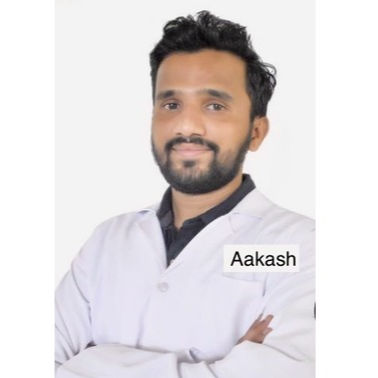How To Reduce Muscle Pain After Workout?
Learn how to reduce muscle pain after a workout with effective recovery tips, stretching, hydration, and remedies to ease soreness and speed up healing.

Written by
Last updated on 3rd Jul, 2025
Introduction
Feeling sore after a workout is common, especially if you’ve tried a new exercise or pushed yourself harder than usual. While muscle pain after exercise, often called Delayed Onset Muscle Soreness (DOMS), is normal, it can be uncomfortable. The good news is that there are simple and effective ways to reduce this pain and recover faster.
Understanding Muscle Pain After Workout
When you exercise, especially during strength training or high-intensity workouts, tiny tears occur in your muscle fibres. This is a natural part of building strength and endurance. Your body repairs these tears, making your muscles stronger over time. However, this process can lead to stiffness and soreness, usually peaking 24 to 48 hours after your workout.
Common Symptoms of DOMS
Common symptoms DOMS:
Tenderness when touching the muscles
Stiffness and reduced range of motion
Mild swelling in the affected muscles
Muscle fatigue and weakness
While DOMS is temporary and usually goes away in a few days, severe or prolonged pain could indicate an injury. If your pain doesn’t improve after 5-7 days, consult a doctor.
Effective Ways to Reduce Muscle Pain
Effective ways to reduce muscle pain are as follows:
1. Warm-Up and Cool Down Properly
A 5-10 minute warm-up (light jogging, dynamic stretches) prepares your muscles for exercise.
A cool-down session (gentle stretching, walking) helps relax muscles and improve blood flow, reducing stiffness.
2. Stay Hydrated
Dehydration can worsen muscle soreness. Drink plenty of water before, during, and after workouts to help flush out toxins and keep muscles flexible.
3. Use Ice or Heat Therapy
Ice packs (for the first 48 hours) help reduce inflammation.
Warm baths or heating pads (after 48 hours) relax tense muscles and improve circulation.
4. Gentle Movement and Light Exercise
Light activities like walking, swimming, or yoga can ease stiffness by increasing blood flow to sore muscles. Avoid intense workouts until soreness subsides.
5. Massage and Foam Rolling
A gentle massage or foam rolling helps loosen tight muscles and improve recovery. Focus on slow, controlled movements over sore areas.
6. Eat a Balanced Recovery Diet
Protein-rich foods (eggs, chicken, lentils) help repair muscles.
Anti-inflammatory foods (berries, nuts, leafy greens) reduce soreness.
Magnesium and potassium (bananas, sweet potatoes) prevent cramps.
7. Get Enough Sleep
Sleep is crucial for muscle recovery. Aim for 7-9 hours of quality sleep to help your body heal.
8. Try Over-the-Counter Pain Relief (If Needed)
If pain is severe, ibuprofen or acetaminophen can help, but use them sparingly and consult a doctor if pain persists.
When to See a Doctor?
Most muscle soreness fades within a few days. However, seek medical advice if you experience:
Severe pain that doesn’t improve
Dark urine (sign of muscle breakdown)
Swelling or extreme weakness
Preventing Future Muscle Soreness
Ways to prevent future muscle soreness are:
Gradually increase workout intensity instead of sudden changes.
Mix different types of exercises (strength, cardio, flexibility) to avoid overuse injuries.
Listen to your body and rest when needed.
Conclusion
Post-workout muscle pain is a natural part of building strength and endurance, but it doesn’t have to slow you down. With proper cool-down routines, gentle stretching, adequate hydration, and rest, you can ease soreness and support muscle recovery. Incorporating protein-rich foods, warm baths, and massage can also make a big difference. Listening to your body and allowing it time to heal is key. By following these simple strategies, you’ll recover faster and stay consistent with your fitness goals.
Consult Top General Physician
Consult Top General Physician

Dr. Chethan T L
General Physician/ Internal Medicine Specialist
5 Years • MBBS, MD, DNB (General Medicine)
Bengaluru
Apollo Medical Center, Marathahalli, Bengaluru

Dr. Rajib Ghose
General Physician/ Internal Medicine Specialist
25 Years • MBBS
East Midnapore
VIVEKANANDA SEBA SADAN, East Midnapore

Dr. Utsa Basu
Diabetologist
14 Years • MBBS , MD
Barasat
Diab-Eat-Ease, Barasat
(75+ Patients)

Dr. Rajshekar B
General Physician/ Internal Medicine Specialist
36 Years • Gen Med MD
Bengaluru
Six Face Clinic, Bengaluru

Dr Aakash Andgi
General Physician/ Internal Medicine Specialist
9 Years • MBBS MD
Bengaluru
Apollo Clinic, JP nagar, Bengaluru